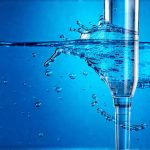Understanding Our Innate Hydration Wisdom
We often hear about needing eight glasses of water a day, but this seemingly simple instruction can quickly devolve into anxiety for many. Obsessing over precise fluid intake can transform a healthy habit into another source of self-criticism and restriction. The truth is, our bodies are remarkably adept at regulating themselves, including hydration. Most adults possess an internal cue system that signals thirst long before dehydration becomes a serious concern. This inherent wisdom is often muffled by external noise – dietary trends, wellness pressures, and the pervasive idea that we must actively “achieve” health rather than simply allowing it to unfold naturally. Reclaiming our trust in this innate ability is key to developing a healthy relationship with fluid intake, one rooted in awareness rather than fear or control.
This isn’t about ignoring hydration altogether; it’s about shifting the focus from quantity to responsiveness. It’s about recognizing that thirst is not a sign of failure but an invitation—a gentle nudge from our bodies letting us know what they need. When we attempt to force-feed ourselves water or rigidly adhere to arbitrary numbers, we inadvertently disconnect from these vital signals and create a dynamic where hydration feels like a chore. This can lead to feelings of guilt if we don’t meet our self-imposed standards, or even paradoxically, to a diminished sensitivity to genuine thirst cues over time. A more compassionate approach acknowledges that fluid needs vary drastically based on individual factors—activity level, climate, diet, and overall health –and prioritizes listening to what your body tells you.
Cultivating Fluid Awareness: Beyond the Eight Glasses Rule
The “eight glasses a day” rule is largely arbitrary and doesn’t account for the wide variability in individual needs. It originated as a general recommendation and has become deeply ingrained in popular culture, but it often creates more harm than good. A far more effective strategy involves developing fluid awareness – paying attention to your body’s signals and responding accordingly. This means learning to differentiate between genuine thirst and other sensations that might mimic it, such as hunger or fatigue. It also means recognizing the many sources of hydration beyond plain water; fruits, vegetables, soups, and even tea contribute significantly to our daily fluid intake.
Focusing on awareness removes the pressure of achieving a specific number and instead encourages mindful engagement with your body. This can be cultivated through simple practices like pausing during meals to check in with yourself – are you truly thirsty or simply habituated to drinking alongside your food? Notice how your body feels after different activities – do you feel more alert and energized when adequately hydrated, or sluggish and tired? Over time, this mindful practice will help you attune to your individual hydration needs without resorting to rigid rules. Trusting your body is the foundation of sustainable healthy habits. Understanding how predictable fluid patterns can reduce urge may also aid in building awareness.
Furthermore, understanding that thirst isn’t always immediate is crucial. As we age, our thirst mechanism can become less sensitive, making it even more important to proactively notice signs of mild dehydration – things like dry mouth, dark urine, or fatigue. This doesn’t mean forcing yourself to drink; it means being mindful and offering fluids when these subtle cues appear. It’s about proactive gentleness, not demanding compliance.
Recognizing Thirst Cues & Dehydration Signals
Thirst is the most obvious signal, but often arrives after we’re already mildly dehydrated. Learning to identify earlier indicators can prevent discomfort and maintain optimal function. These include:
- Dry mouth and throat
- Dark yellow urine (ideally, it should be pale straw colored)
- Decreased urination frequency
- Fatigue or lethargy
- Headache
- Muscle cramps – especially during exercise
It’s important to note that these signals can sometimes overlap with other conditions. For example, fatigue can be caused by a multitude of factors beyond dehydration. However, when combined with other indicators, they paint a clearer picture. Paying attention to the context is crucial. If you’ve been physically active or exposed to heat, dehydration is more likely.
The body’s response to fluid loss isn’t always linear; sometimes thirst can be suppressed during intense activity, making it even more important to stay proactive about hydration. This is why sipping water regularly throughout the day – not just when you feel thirsty – can be beneficial, especially in hot weather or during exercise. Remember this isn’t a requirement but rather an act of self-care, a gentle offering to support your body’s needs.
Hydration & Lifestyle Factors
Many lifestyle factors influence our fluid requirements. Activity level is paramount—the more active you are, the more fluids you need to replenish those lost through sweat. Climate plays a significant role; hot and humid environments increase perspiration, necessitating increased intake. Diet also matters: foods with high water content (fruits, vegetables, soups) contribute to overall hydration, while diets rich in sodium can increase fluid needs.
Beyond these obvious factors, certain medical conditions or medications may impact hydration status. For example, diuretics increase urination, potentially leading to dehydration if fluids aren’t adequately replenished. Similarly, individuals with kidney problems may have different fluid requirements than healthy adults. It is vital to consult a healthcare professional for personalized guidance. Understanding how to support kidney drainage without irritation can be helpful in these scenarios.
Finally, consider your daily routine. Do you spend most of your day indoors in air-conditioned environments? Or do you work outdoors in the sun? Are you prone to forgetting to drink throughout the day? Identifying these patterns can help you tailor your hydration strategy to your specific lifestyle and ensure you’re providing your body with what it needs, when it needs it.
Mindful Fluid Consumption: Beyond Just Water
Hydration isn’t solely about drinking plain water. Many beverages contribute to fluid intake, including herbal teas, infused water (water flavored with fruits or herbs), diluted fruit juices, and even milk. Furthermore, a significant portion of our daily fluids comes from the food we eat. Fruits like watermelon, strawberries, and oranges are naturally hydrating, as are vegetables like cucumbers, celery, and lettuce. Soups and smoothies also provide substantial fluid volume.
The key is to choose beverages that support overall health and avoid excessive sugar or artificial sweeteners. While caffeinated beverages can contribute to hydration, they also have a mild diuretic effect – meaning they can increase urination. It’s important to balance these with water intake to prevent dehydration. Focus on variety and listen to your body. If you find plain water boring, experiment with different flavors and infusions to make it more enjoyable.
Ultimately, mindful fluid consumption is about integrating hydration into your daily life in a way that feels natural and sustainable. It’s about moving away from rigid rules and embracing the wisdom of your own body, trusting its signals, and responding with kindness and care. This approach fosters a healthier relationship with fluids, one rooted in awareness, respect, and genuine well-being.





















